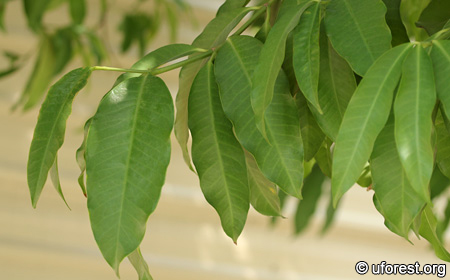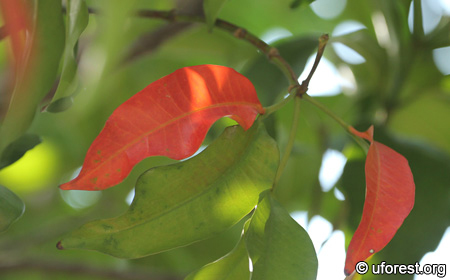Kopsia arborea Blume
| Etymology | Genus | After Jan Kops, a Dutch botanist |
|---|---|---|
| Species | Tree-like; describing its form | |
| Family | Apocynaceae | |
| Synonyms | Kopsia jasminiflora Pit., Kopsia lancibracteolata Merr., Kopsia laxinervia Merr. | |
| Common Names | Penang Sloe | |
| Status | Exotic: Cultivated Only | |
| Form | Tree | |
| Native Distribution | Andaman & Nicobar Islands, southern China, Thailand, Vietnam, Malesia, and Queensland | |
Diagnostics:
Kopsia arborea is a fairly common cultivated tree. It is a relatively short tree with oppositely arranged elliptic leaves with wavy margins. A useful guide is to look out for the old leaves which will turn reddish or purple (almost always present). The flowers are white with a faint yellow centre while the fruits is ovoid in shape.
Compared to all other Kopsia species, the Penang Sloe the only one that does not have a projection on its fruits.
Interesting Facts:
The species Kopsia flavida is misapplied to K. arborea in various local publications. K. flavida is actually a unique species by itself; having white flowers with a pink centre as well as fruits having a horny projection (Middleton, 2007).

Form of the Penang Sloe in Sengkang.

Leaves have wavy margins.

Old leaves turn red or purple.

A mark on the midpoint of where the opposite leaves meet.

Flowers are white with a faint yellow centre.

Fruits are dark purple and ovoid.
References
Middleton DJ. (2007) Apocynaceae (Subfamilies Rauvolfioideae and Apocynoideae). Flora Malesiana, Volume 18. 474 pp.Author: Siyang
Posted: 2013-07-25 / Modified: 2017-12-25